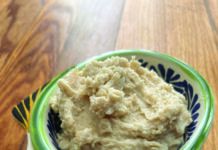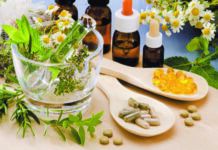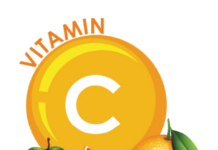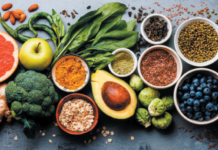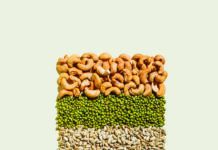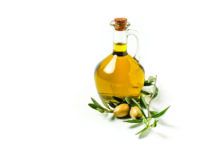Readers of this newsletter know that drinking fruit juice is no substitute for consuming whole fruits. Processing fruit into juice loses most of the fiber, often adds sugar, and damages some of the nutrients that make fruit such a healthy choice. But people who nonetheless like to start their day with a glass of orange juice can take some encouragement from a new study published in the Journal of Agricultural and Food Chemistry. It found that juicing may improve how readily certain nutrients can be absorbed by the body.
“The researchers compared the carotenoid, flavonoid and vitamin C concentrations in fresh orange segments, homogenized orange puree and orange juices that varied in processing (freshly squeezed, pasteurized and flash-pasteurized),” explains Elizabeth J. Johnson, PhD, a scientist in Tufts’ HNRCA Antioxidants Research Laboratory. “They reported that the content of some carotenoids and flavonoids decreased with juicing, while the vitamin C content was unaffected.
“They also evaluated the bioaccessibility (the fraction of the compound that is released from the food matrix in the gastrointestinal tract that is available for intestinal absorption) of these bioactives. Compared to orange segments or puree, the bioaccessibility of carotenoids increased three- to four-fold in the orange juices. For flavonoids, there was a four- to five-fold increase and the increase for vitamin C was approximately 10%.”
Juice vs. Whole Fruit: Pros and Cons
Consumers perceive orange juice as a healthy source of vitamins and other health-promoting nutrients, the researchers noted, and juice offers convenient packaging and long shelf life. Recent intervention studies have shown health benefits of long-term orange juice consumption, including increased total antioxidant status, lower total cholesterol levels, and the prevention of increases in toxic compounds after meals high in fat and carbohydrate. The researchers added, “However, greater consumption of orange juice has also been criticized because of its high intrinsic sugar level, being associated with a higher risk of type 2 diabetes and cardiovascular diseases.”
What’s a confused consumer to do? The finding that juicing makes certain nutrients more available is certainly a plus, since dietary carotenoids, flavonoids and vitamin C have been associated with decreased risk of certain diseases.
But Tufts’ Johnson adds several cautionary notes before you run out for extra OJ. “These were in vitro laboratory studies and translation to what this implies to human nutrition should be done with caution,” she says. “Moreover, the carotenoid content of all oranges and products made from oranges is extremely low, such that any significant differences among the foods have little meaning.”
Similarly, she notes, the actual health importance of the observed differences in flavonoids is questionable.
Pasteurized orange juice scored the highest for bioaccessibility of vitamin C, while the homogenized orange puree scored the lowest. “While this may seem like a large difference,” Johnson adds, “one needs to consider that the puree still provides more than 13% of the RDA for adults, which by FDA standards would categorize it as a good source of vitamin C.”
Fruit Fiber: It’s Important
For most consumers, the fiber and pectin lost in juicing still overrides any minor benefits in bioaccessibility. According to the USDA’s Nutrient Database, one cup of orange juice contains less than a gram of dietary fiber (0.7 gram), while a cup of orange segments has 4.3 grams of fiber.
Beware, too, of orange juice beverages that contain added sugar (and often not much actual juice).
“All in all, results from this study should not cause concern for orange/orange product selection for most individuals when it comes to these bioactives,” says Johnson. “Those who have interest in their intakes of pectin and fiber may wish to consider oranges and orange puree. When considering sugar content, there is no difference between fresh oranges versus pure orange juice. All foods evaluated can be considered as a good-to-rich source of vitamin C.”
You may come across Internet rants against pasteurization (Pasteurized food is dead food!), but the truth is this 150-year-old technique is important for food safety. We associate pasteurization with milk, but the US Food and Drug Administration says it also makes juice safer. When fruits are squeezed, the FDA warns, bacteria from the produce can end up in your juice or cider.
The FDA has received reports of serious outbreaks of foodborne illness that have been traced to drinking unpasteurized fruit and vegetable juice and cider. Children, the elderly and people with weakened immune systems risk serious illnesses or even death from drinking untreated juices. Pregnant women should also avoid unpasteurized juice. Since 1999, the FDA has required juice manufacturers to place warning information on product containers about the health risks of drinking untreated juice or cider.
In pasteurization, named for Louis Pasteur, a food or beverage is heated to kill harmful bacteria such as E. coli, salmonella and listeria, then cooled and packaged. In the newer process called flash pasteurization, the heating and packaging are combined: Liquid is heated (to a higher temperature than in standard pasteurization) as it is being poured into a sterile container. The process takes only about 15 seconds rather than 30 minutes.


